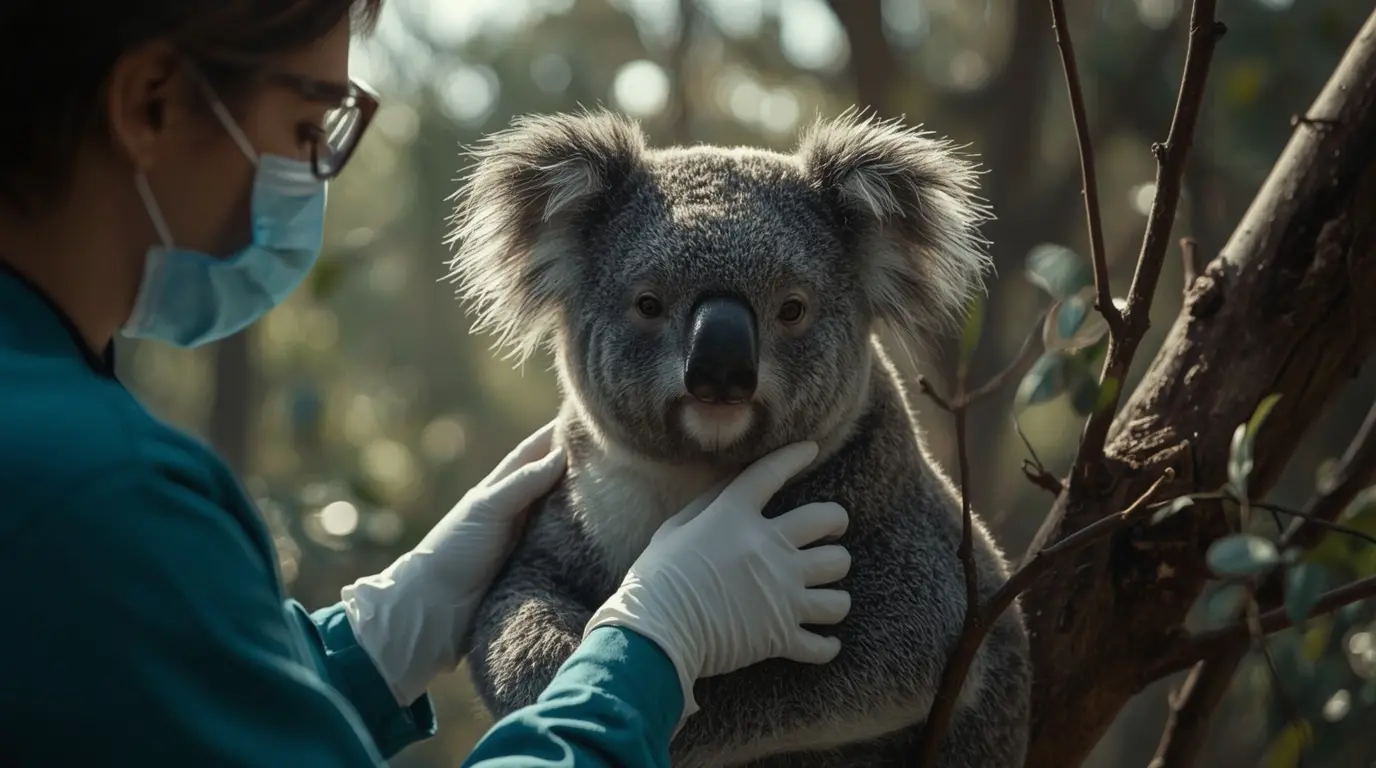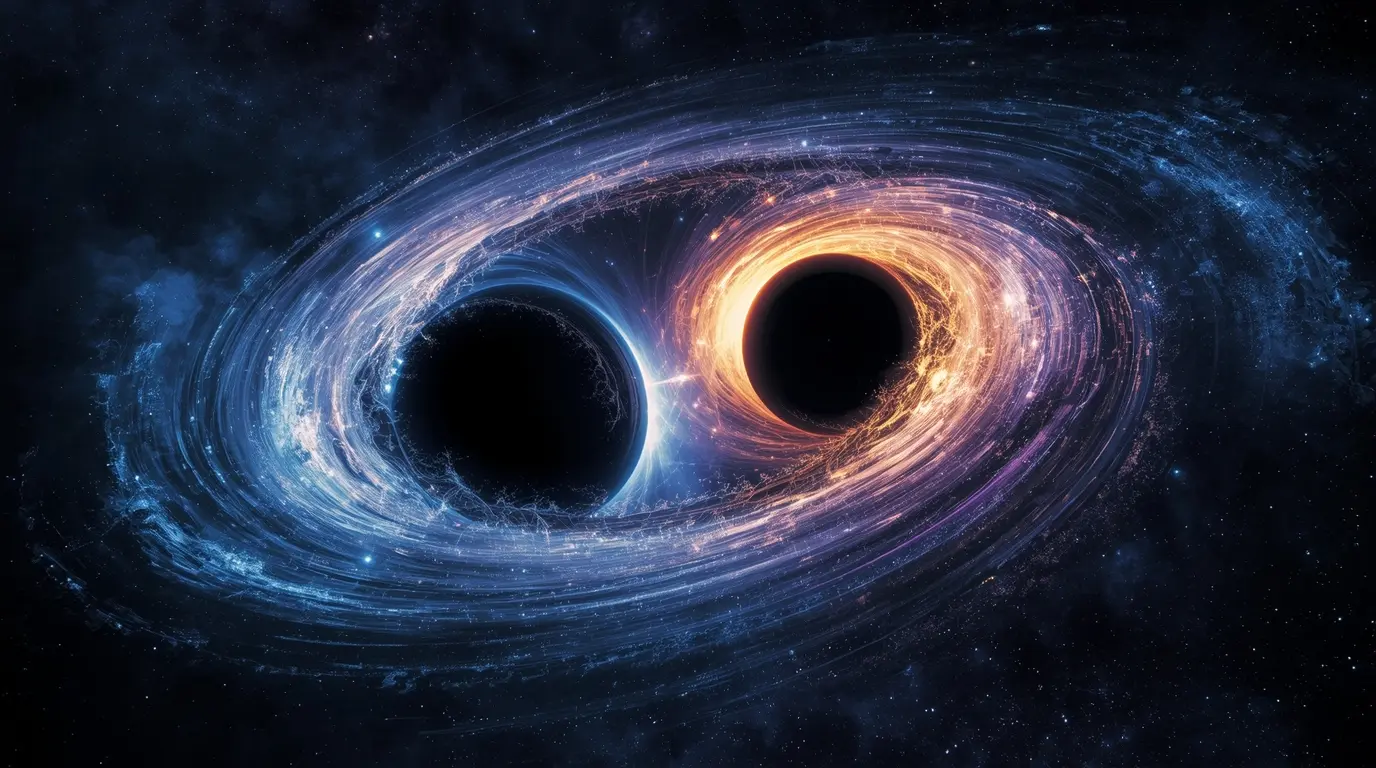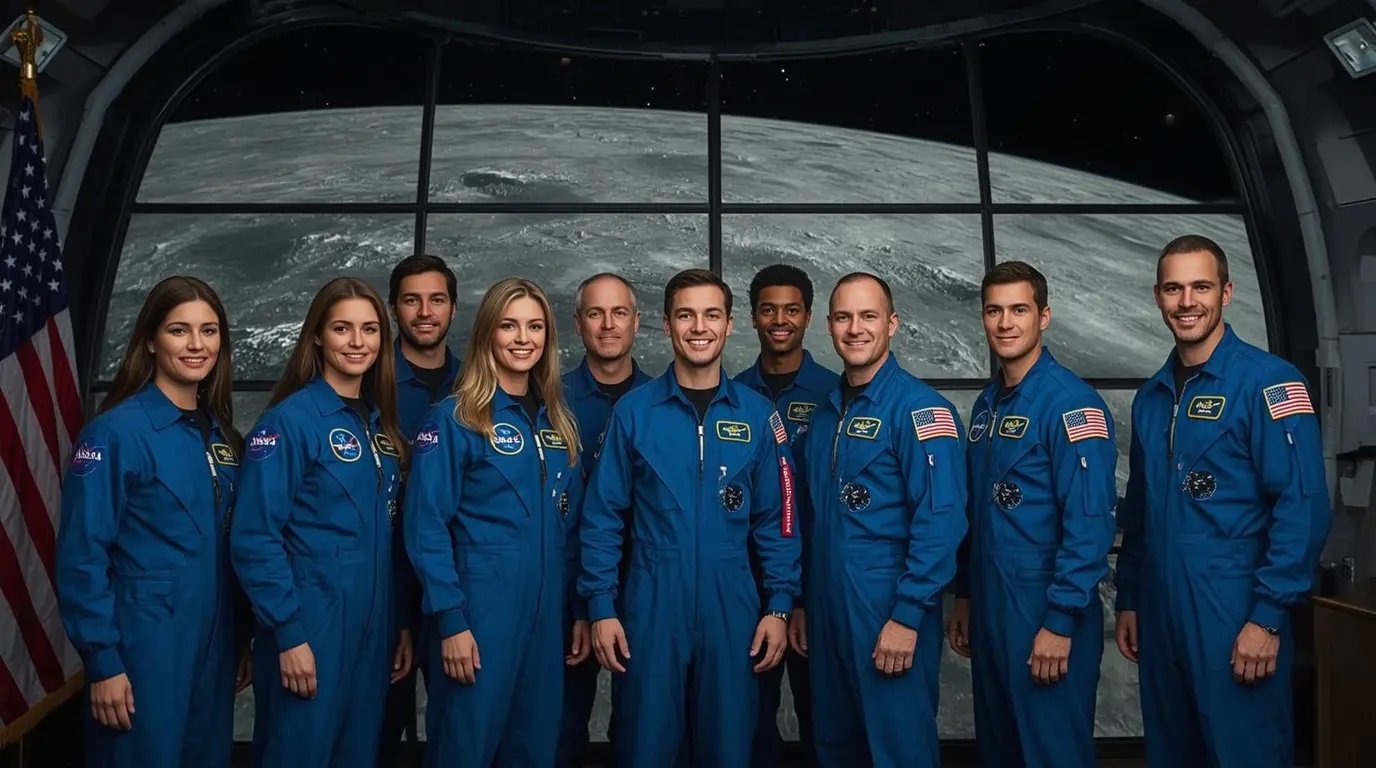The Breakthrough in Koala Conservation
Australia has just authorized the world’s first-ever chlamydia vaccine for wild koalas, marking a watershed moment in wildlife care. This innovation offers a powerful lifeline to koalas, a species already under siege, with the disease claiming almost half the deaths among wild koalas. Years of hard work–ten-plus in laboratories and bush settings–have finally given the nation’s favorite marsupial the shot it desperately needed.
The timing couldn’t be better. Koala numbers have nose-dived for 20 years. Research from WWF Australia reveals the population has halved in just that period, with roughly 224,000 to 524,000 koalas still in the wild. In 2022, so little hope was left that they earned official endangered status in Queensland, New South Wales, and the ACT. Recent surveys in those territories have tallied as few as 95,000 koalas in total, making the vaccine the critical tool needed in the fight for their survival.
Understanding the Chlamydia Threat to Koalas
Koalas face a huge health emergency because of a strain of chlamydia that is different from the one that infects humans. This koala strain, called Chlamydia pecorum, causes painful urinary tract infections, infertility, blindness, and sometimes death. It has played a major role in pushing these adorable animals closer to extinction.
The bacteria spreads easily within groups of koalas. It’s most common when a male and female mate, but it can also pass from a mother to her joey when the young one sips milk in the mother’s pouch. In some regions, especially in South East Queensland and New South Wales, infection levels are shockingly high—50 to 70 percent in certain areas. Professor Peter Timms, who leads microbiology research at the University of the Sunshine Coast’s Centre for Bioinnovation, puts it bluntly: “Some individual colonies are edging closer to local extinction every day.”
So far, options for treating the disease have been very limited and tricky. The standard antibiotics can reduce the infection but also wipe out the friendly gut bacteria that help koalas break down eucalyptus leaves, which are their only food. Without these bacteria, koalas risk starvation and death. Even when antibiotics do work, they rarely stop new infections from happening, so the animals are left open to repeated outbreaks soon after treatment.
A Decade-Long Scientific Journey
The newly approved vaccine for koalas is the result of over a decade of determined research at the University of the Sunshine Coast (UniSC). A team led by Professor Peter Timms and molecular microbiologist Dr. Samuel Phillips confronted many obstacles while working to create a safe and effective shot.
Dr. Phillips describes the development process as “very challenging.” He explains that getting the vaccine registered took about five years—much longer than the one-year timeline the team hoped for. Thanks to their dedication, the vaccine is now approved by the Australian Veterinary Medicines Authority, the country’s official regulator for veterinary products.
Researchers tested the vaccine on more than 500 koalas through eight rounds of trials involving both wild and captive animals. Across these trials—which included multiple generations of the animals—scientists collected powerful data about both safety and how well the vaccine works. The longest and largest study on wild koalas found that the shot lowers the risk of dying from chlamydia by at least 65% in wild herds.
How the Koala Vaccine Works
This newly developed koala vaccine marks a key breakthrough for wildlife care. It’s a single-shot dose that doesn’t require any boosters, which makes it ideal since catching wild koalas again can be stressful for them.
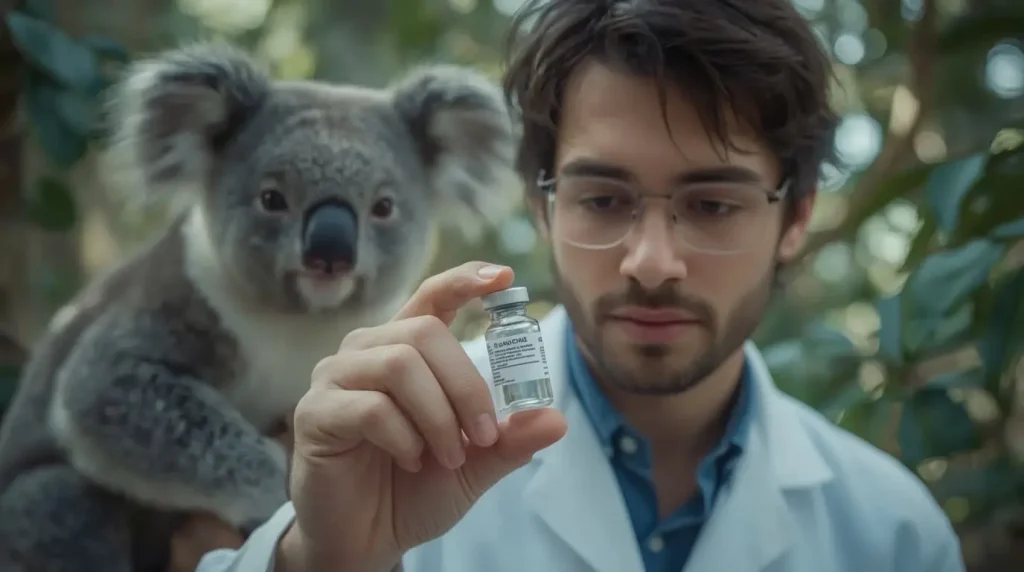
Inside the koala’s body, the vaccine goes to work by zeroing in on a tiny piece of the chlamydia germ known as MOMP—one of its outer skin proteins. Scientists teamed up with the University of Saskatchewan and the International Vaccine Institute to fine-tune a special helper ingredient (called an adjuvant) that makes the koala’s immune system react strongly to MOMP.
Dr. Phillips notes the vaccine provides three kinds of defense: it cuts down the germ’s numbers, stops the illness from getting worse, and—sometimes—helps the koala get better even if it already has symptoms. This means that a koala showing early signs of illness can still gain protection from the shot, helping to heal its damaged eyes, urinary tract, or other affected organs.
Key Facts About the New Koala Vaccine for Chlamydia
| Aspect | Detail |
|---|---|
| Development Time | More than a decade |
| Administration | One injection only |
| Efficacy | Cuts death rate by at least 65% |
| Protection Type | Blocks infection and stops disease from getting worse |
| Trials | 500+ koalas and 8 trials |
| Approval Date | September 2025 |
Moving Forward with the Koala Vaccine
Now that the Chlamydia vaccine has the green light, the next step is making sure it gets to the most vulnerable koalas. Scientists are working on plans to deliver the shot through wildlife hospitals, vet clinics, and on-the-ground teams that will visit koalas living in the wild.
Even so, big hurdles still lie ahead. Catching, carrying, and vaccinating wild koalas is slow, hard work, and very expensive. Professor Timms has said that without serious money from donors and government programs, the team won’t be able to vaccinate all the koalas that are at the greatest risk.
Production started earlier this year, and scientists are on track to prepare the first batch of 500 doses by the start of 2024. Wildlife hospitals alone will need between 1,000 and 2,000 doses every year, and that’s before counting the shots needed to look after wild koalas in field programs.
To speed things up, the vaccine is being made in partnership with Tréidlia Biovet, a small Australian company that specializes in animal health. Having the vaccine produced right here means Australia can ensure that it has the right amounts of doses and that the quality of every batch meets strict Australian standards.
Beyond Disease: The Bigger Picture for Koalas
The new koala vaccine is great news, but it’s only part of the solution. Professor Timms drives the point home: “Shelter loss is still top of the list. No trees means koalas have nowhere to go.” Conservationists all over Australia agree.
Figures released by the Australian Conservation Foundation paint a grim picture. Green lights have been given for clearing nearly 4,000 hectares of critical koala forest across eight projects this year. To put that into perspective, that’s like losing the trees over four Sydney Airports.
Looking further back, from 2011 to 2023, the numbers get even worse. More than 2.2 million hectares of likely koala territory have been lost in New South Wales and Queensland—an area larger than twice the size of greater Melbourne. Of that, 98% didn’t go through a mandatory check under federal law. Most of this clearing was driven by agriculture.
The koala still faces an uphill battle. Beyond losing trees, the marsupials are also coping with disease, heat, bushfires, roads, and predation. This is why saving our koalas has to be a complete effort, targeting all the pressures that are going to dim their future.
A Global Effort to Save an Icon
Creating the vaccine for koala disease is truly a worldwide project. Scientists, universities, and organizations around the planet joined forces, sharing knowledge and tools. The adjuvant, a key extra part of the vaccine, came from a partnership of the University of Saskatchewan’s Vaccine and Infectious Disease Organization, the International Vaccine Institute, the University of British Columbia, and Dalhousie University.
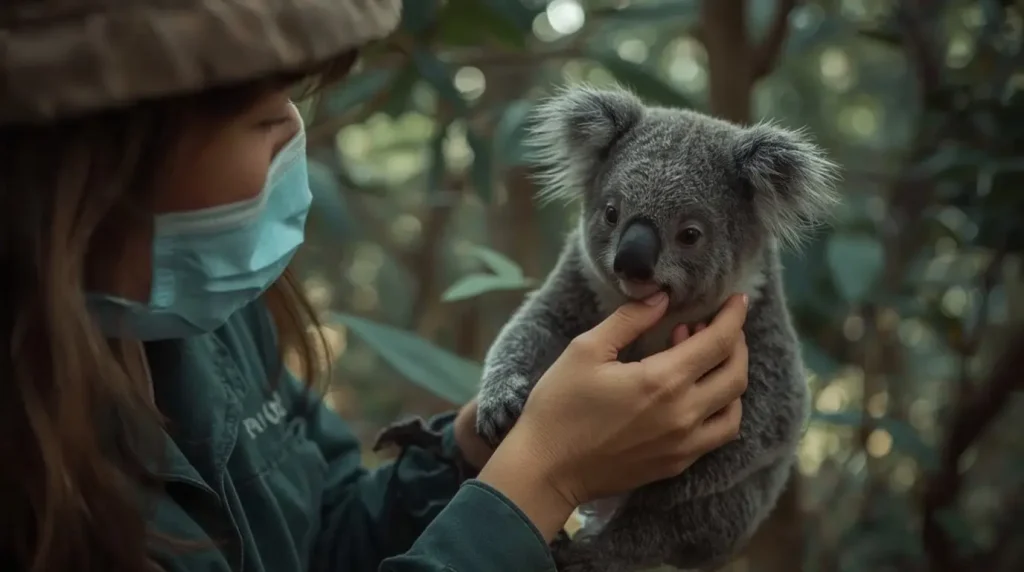
Vital help also arrived from the Morris Animal Foundation, Rane Pharma, and the global animal health company Ceva Santé Animale. Pierre-Marie Borne, who leads the Ceva Wildlife Research Fund, pointed out that saving the koala is a mission for everyone on Earth. He said, “This initiative isn’t just research; it’s a life-saving action. Preventing the koala from vanishing helps keep Australia’s ecosystems healthy and offers a model for the planet’s other saving missions.”
Hearing the vaccine was approved felt like a great finish line for everyone. Dr. Timms admitted that the researchers sometimes felt like stopping, so when the green light finally came, it made the day “very thrilling and satisfying” for the entire project team.
Hope for the Future of Koalas
The authorization of a vaccine against chlamydia is a game changer for the survival of Australia’s koalas. While obstacles in scaling production and getting it to the field remain, the successful trial lifts spirits, showing koalas can be shielded from a disease that has devastated them for years.
“Thanks to this breakthrough, we can be confident that future generations will hear the iconic call of the koala in its forest home,” declared Environment Minister Murray Watt. He emphasized that the government will keep pushing on other fronts, from constant koala counting to replanting tree corridors.
On the same positive note, NSW has just announced the creation of the Great Koala National Park. Covering 176,000 hectares—about the same size as the city of Greater London—this reserve will protect enough eucalyptus forest for 12,000 koalas and many other animals that share the same declining habitat.
Dr. Terri Irwin of Australia Zoo Wildlife Hospital, a key site in the vaccine trials, expressed why this moment matters: “For a koala, this inoculation is a critical doorway to the future. Every partner is helping the species get a second chance, and Wildlife Warriors is proud to lead the charge in the field.”
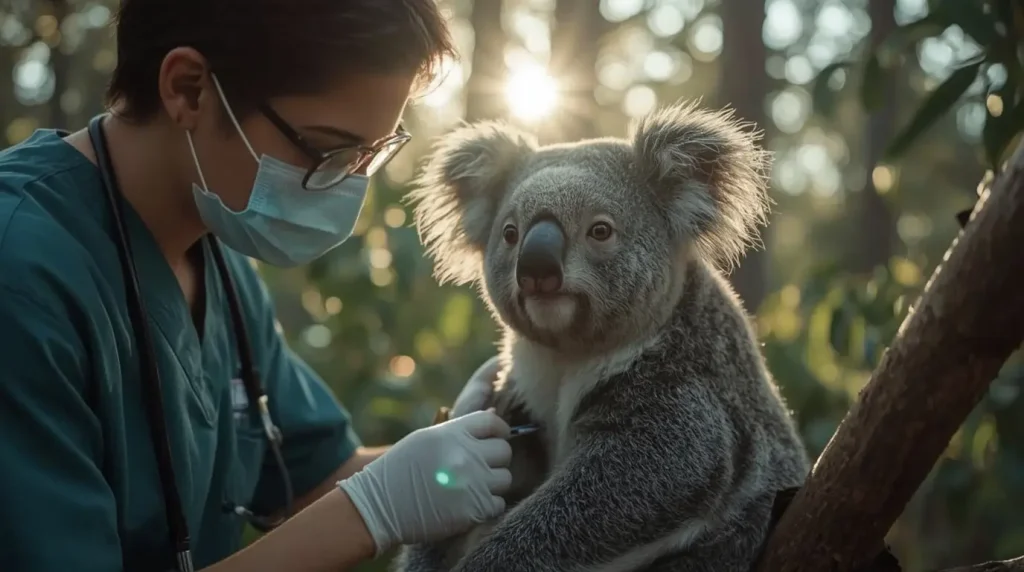
Recovery for Australia’s koalas stays a tough climb, yet thanks to this new scientific breakthrough, fresh hope has sparked that these beloved creatures can dodge extinction and keep roaming their forests for many more generations.
Source: https://edition.cnn.com/2025/09/10/science/koala-chlamydia-vaccine-rollout-intl-scli
For more incredible stories of everyday news, return to our homepage.

